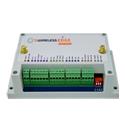
Satellite IoT – The Sky ISNT the limit
Intro – Huge Growth in Satellite Communications
Today, ~600 million people (~7% of global population) live outside the range of a mobile network and this is sometimes referred to as the “coverage gap”. Surprisingly, only ~10% of the earth’s surface actually has access to terrestrial cellular connectivity services which naturally leaves a big opportunity for satellite communication to serve both consumers and enterprises. Traditionally, satellite communication has been affordable for only the most valuable and mission critical use cases, but it is now expanding rapidly driven mostly by LEO (Low Earth Orbit) volumes from SpaceX/Starlink, Amazon/Kuiper, OneWeb and soon to be China satellite network group (1) as seen in Figure 1.
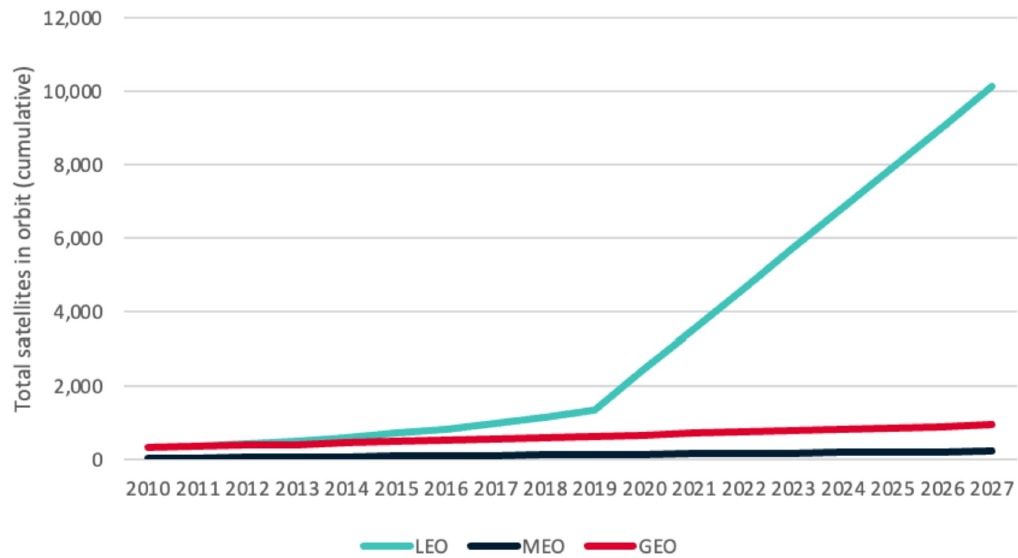
Figure 1 – Source – Union of Concerned Scientists – GSMA Intelligence
Advances in satellite constellations and their ground transceivers are lowering satellite connectivity costs, enabling new IoT use cases that have previously been impractical or too cost sensitive. The 3GPP (cellular standards body for over 25 years) standards now incorporate NTNs (Non Terrestrial Networks) in Release 17 (2), which has the potential to vastly decrease cost, and increase the addressable universe of devices. For consumers with high-end smartphones (3) you can now connect and send potentially life-saving SMS messages directly via satellites, if you don’t have cellular or Wi-Fi coverage, (think sending an SOS/SMS message if you get lost or injured while hiking in the mountains). In an increasingly connected enterprise IoT world (transportation, agriculture, marine) where a lack of cellular coverage can mean a complete lack of service, the best cellular technology (Modem + SIM + Network combo) will be the one that provides “adequate reliable coverage cost effectively” to service every monitored asset, in every fleet, in every country. Despite terrestrial cellular being a global technology, achieving global coverage for IoT devices is surprisingly costly and challenging even for the experts. With satellite communication however, coverage is certainly not the biggest issue or challenge (Hence our controversial title, “The Sky ISN’T the limit”). Figure 2 shows how satellite “base stations” in the sky can cover massive areas of land and sea. One GEO (Geostationary Orbit) for example could cover the same landmass as thousands of terrestrial base stations and without suffering from many macro and micro coverage gaps.
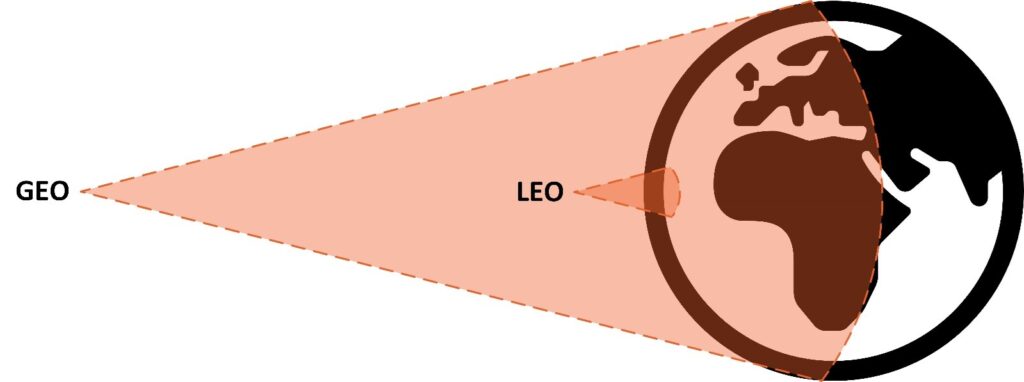
Figure 2 – Vast coverage areas (land and sea) is one of the advantages of satellite communication.
We have illustrated some LEO, MEO (Medium Earth Orbit) and GEO satellite operators along with some service providers in Figure 3. It’s clear that there is rapid growth of satellites being launched (particularly LEO) but technically and commercially, will this translate to universal affordable global connectivity for IoT enterprise customers to connect more assets and offer better connected operations.

Figure 3 – Satellite operators and service/solution providers
IoT Use Cases for Satellite IoT/ NTN
After decades of helping customers design and manage global cellular connected devices, it’s exciting to be integrating satellite communication (albeit narrowband for now using NB-NTN) that naturally doesn’t suffer from coverage gaps in the same way cellular networks do. Rather, satellite communication devices (just like satnav/GNSS devices) thrive in remote locations where a “clear view of the sky” is the priority for satellite connectivity and not the proximity to a ground cellular base station. You can think of terrestrial cellular working better the denser the population gets (towns, cities) and satellite communication working better as populations get sparser (mountains/deserts/oceans/farms) (1). Figure 4 gives a clue into the macro sectors where satellite communication will be most needed but of course there are dozens of more micro context specific applications and use-cases within each of these sectors. As the applications get more domain specific, so do the specific requirements for connectivity. Integrating your device satellite communication as “narrowband V broadband” or “primary V secondary” or “NTN only V dual/hybrid mode” will all get flushed out the more specific the device usage requirements become.
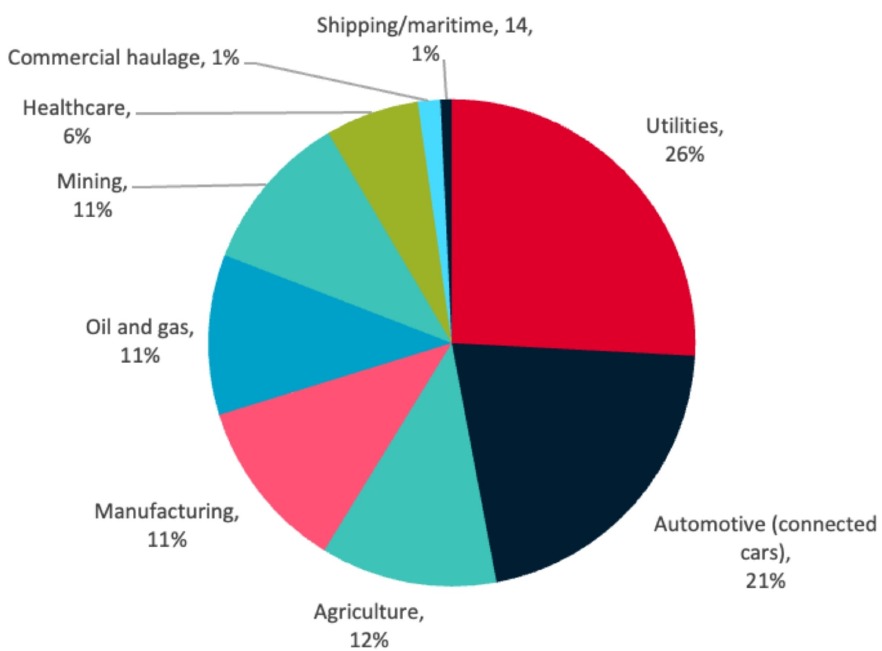
Figure 4 – Sector split of the IoT base addressable via Satellite, 2035 (Source GSMA)
NTN Commercial Trends
Increasing momentum in collaborations between traditional Mobile Network Operators (MNO/MVNOs) and satellite operators (1) indicates that (in most cases) NTN will likely complement cellular rather than be an alternative/competitor to cellular. For the first time, this 3GPP NTN standard enables cellular devices to access satellite communication, initially NB-NTN for narrowband/SMS type services and NR-NTN (5G New Radio) for more broadband voice and data services as NTN evolves. Satellite NTN background technology is specified in 3GPP specifications and summarized nicely in Matt Hatton’s/GSMA IoT Guide (4) where we can see it will be possible to have coverage through hybrid cellular/satellite offerings using 3GPP NTN. Skylo has been the most active NTN provider for hybrid cellular/satellite offerings and even Qualcomm have collaborated (5) with Skylo in launching new modems for NB-NTN. Matt’s IoT guide (4) nicely captures the recent commercial trends of satellite NTN, so we don’t need to repeat here. From our own viewpoint, a hybrid Cell+Sat future is mostly the way forward but what is still unclear in the short term is what combination of cellular will OEM’s really want to integrate in their devices alongside NB-NTN. Integrating NB-NTN into already existing LPWAN modems (E.G. Qualcomm 9205 -> 9205S (6)) will be the first iteration of the hybrid device future but given that many OEMs are already or will migrate from multimode LPWAN (NB, CatM, 2G) modules to more global Cat1.bis means we already see demand for a Cat1.bis + NB-NTN also as a combo architecture. Device architects, engineers and operations teams will look at a matrix like below and some will ask for dual Cell+Sat functionality in next generation devices. For example, some may want higher throughput, lower latency Cat1.bis for primary connectivity (E.G. Vehicle/Video Telematics) but satellite NTN as an emergency backup connectivity to know where a vehicle is located and if the driver is safe. For the above scenario, apart from designing in a QCX216 (7) based module (Cat1.bis) with a 212S (NTN only) and having 2 separate SIM cards, currently there is not a single integrated chipset we have seen for this scenario but its early days and the customer use case will eventfully dictate.
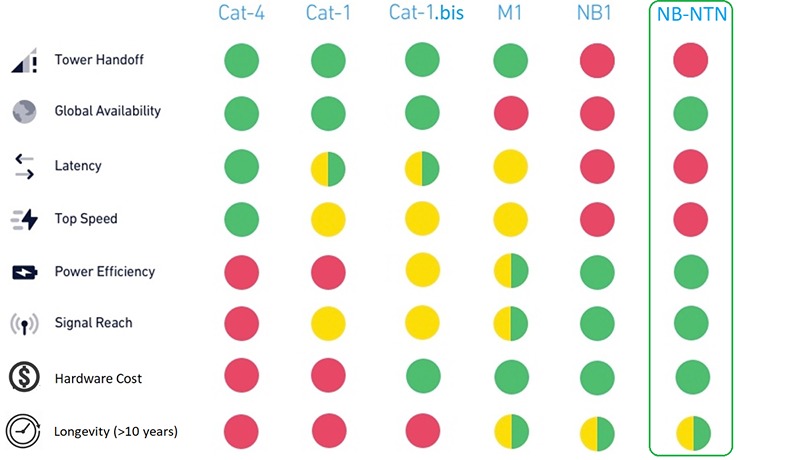
Figure 5 – High Level Cell+Sat – Hybrid/Dual/Multimode – Decision Helper Matrix (NB-NTN now added)
NTN Integration into Legacy and new IoT Devices
As usual the application and use-case demand will dictate the exact device hardware/software architectures but a few key areas of focus for device integrators like us already are:
1. Satellite as primary (main) or secondary (backup) communications in hybrid Cell+Sat devices
Just like the “Cellular versus Wi-Fi” debate (as primary or secondary comms) for example in home electric car chargers or smart home devices like thermostats/cameras etc., each application will need to decide whether Cellular or NTN should be the primary communications method, and which should be the secondary. For example, there are those for which the satellite connections will likely be the primary, including offshore turbines/buoys, sea transport, large unmanned aerial vehicles (UAVs), some forms of asset monitoring (for instance for well heads), and potentially for high value asset tracking (4). Many others will still use terrestrial cellular as primary.
2. Chipset and module availability
Qualcomm launched the 9205S (6) (hybrid Cell+Sat) and 212S (8) (NTN only for stationary use-case) in collaboration with Skylo. So far, the new modems follow the 3GPP Release 17 standards for satellite communications on GEO and are being integrated into various modules. Other very popular chipsets are the Sony Altair ALT1250 (9) and ALT1350 (10) and the Mediatek MT6825 (11).
3. Antenna Integration
Just like with cellular and satnav/tracking/GNSS devices, antenna integration for NTN will be critical. For example, it is common for vehicle telematics devices to have more RF integration challenges on GNSS than cellular given the directional nature of communicating directly with satellites in the sky. Selecting a catalog wideband antenna that covers “L band” (1-2 GHz) and “S band” (2-4 GHz) may be straightforward but integrating the antenna mechanically into (many small form factor) devices for reliable RF performance will be the real challenge just like it is with terrestrial cellular and GNSS positioning. If it is a hybrid (Cell+Sat) mobile device like a vehicle tracker, then antenna selection to achieve good cellular, GNSS and NTN performance will not be trivial and the smaller the devices get, the bigger the RF challenge usually becomes. Some initial NTN testing done on this can be seen here with this device being quite large relative to many other IoT devices:
TxWireless Field Test Report: SiloSpi Satellite NTN – Field Test Report
Taoglas Chamber Test Report: SiloSpi Satellite NTN – Passive Antenna Chamber Testing
4. Device Certification
Just like with traditional cellular connected devices, there will be a number of layers of device certification required. While the ecosystem is still building itself and MNO/MVNOs are absorbing the technology from wholesale NTN providers such Skylo the carrier certification requirements will take time to emerge and in the meantime Skylo and others are providing chipset, module and device certification guidance (12) in order to ensure technological harmony on the network.
5.Industrial and Mechanical Design
Given the inherent “clear line of sight to sky” requirement for reliable satellite NTN communications, the form factor of any given connected device and where it is mounted and installed on any given asset/object (electricity lines, pipeline, vehicle, trailer, animal, person) will be critical. Terrestrial cellular communications are more omni-directional in nature whereas NTN is more directional.
6.Integration with Legacy Gateways – A case for an NTN dongle
As touched on in the previous section, large OEM’s out there with millions of already fielded devices (Like Cat1 gateways/trackers) may not be upgradeable today to support NTN easily via software upgrades. However, NTN may be desired as a backup/emergency failover connectivity via an NTN dongle type accessory. It will be argued that OEM’s who need NTN functionality can of course tightly integrate Cell+Sat cost effectively into future generation greenfield devices (single SIM, single multimode Cell+Sat modem/chipset) but that will be expensive and time consuming re-designing and re-certifying global products and so there may be demand for a “NTN dongle” form factor (half way house into NTN). Some legacy LTE Cat4/Cat1/CatM gateways/devices have external wired (USB) and wireless (Bluetooth) interfacing capabilities to bolt on additional accessories/capabilities like this. Of course, this is cumbersome and expensive but if you are a fleet management company with millions of fielded gateways, then having an NTN dongle that could be easily installed on the dash of a truck (or roof) and communicate (BLE or USB) to a legacy installed vehicle gateways onboard, this could be interesting.
Conclusion
Many start-ups are focused on standards based 3GPP-based NB-NTN / NR-NTN. Satellite experts see MNO/MVNOs as critical for hybrid Cell+Sat device scale/billing and synergistically MNO/MVNOs see satellite operators as strategic partners with access to new joint services/revenues. Having said that its very early days and both camps remain cautious and somewhat engaged directly with large enterprise customers incase commercial models don’t play out exactly as planned. Whilst the overall ecosystem adoption of the 3GPP standards for NTN is in its infancy, new tariffs for NTN low data rate services are surfacing (8). As the NTN technology and commercial ecosystems evolve, new device architectures, multimode (hybrid/dual/multi-RAT) device software architectures, hardware BOMs, monthly recurring charges (MRCs), managed service platform (MSP), value added reseller (VAR) offerings and other commercial models will play out and satellite NTN technology will filter out its “key use cases” and then we can reflect if satellite communication has successfully fulfilled its mission to provide the final frontier to close the coverage gap. Incumbent satellite operators such as Viasat, Iridium, Orbcomm and Globalstar are still by far the largest satellite IoT operators today and their proprietary technology will still be a good choice today (due to availability, maturity & capability), but we can’t ignore the enormous investment being pumped into both launching new satellite constellations (particularly LEO) and a trojan collaborative effort on the ground by NTN technology leaders (13) to supply wholesale satellite NTN connectivity to MNO/MVNOs to bundle services with or without hybrid cellular data plans. In summary, the last 5 years of satellite communication has been a step change to providing universal, ubiquitous, cost effective hybrid Cell+Sat connectivity and just as SpaceX/Starlink has seen exponential growth in satellite broadband over the previous few years, satellite narrowband (aka NB-NTN / D2D) could see a similar trend over the next 5 years if the technological, commercial and regulatory stars align for NTN.
For any questions regarding the discussed content, please don’t hesitate to reach out to the team via email at sales@txwireless.com.
Author:
Adrian Burns – Chief Architect at TxWireless
Connect with Adrian on LinkedIn
Footnotes
- https://www.gsmaintelligence.com/videos/satellite-and-ntn-summit-at-mwc24-full-recording-and-slides/
- https://www.3gpp.org/specifications-technologies/releases/release-17
- https://support.apple.com/en-us/105097
- https://www.gsma.com/solutions-and-impact/technologies/internet-of-things/gsma_resources/iot-guide-hybrid-cellular-non-terrestrial-network-ntn/
- https://www.qualcomm.com/news/releases/2023/06/qualcomm-launches-new-satellite-iot-solutions-to-provide-uninter
- https://www.qualcomm.com/products/technology/modems/9205s-modem
- https://www.qualcomm.com/products/technology/modems/216-lte-iot-modem
- https://www.qualcomm.com/products/technology/modems/212s-modem
- https://altair.sony-semicon.com/products/alt1250/
- https://altair.sony-semicon.com/products/alt1350/
- https://www.mediatek.com/products/5g-ntn/mt6825
- https://www.skylo.tech/skylo-certification-program
- https://www.skylo.tech/newsroom/globally-connected-tariffs-for-satellite-connectivity-in-the-internet-of-things-iot















